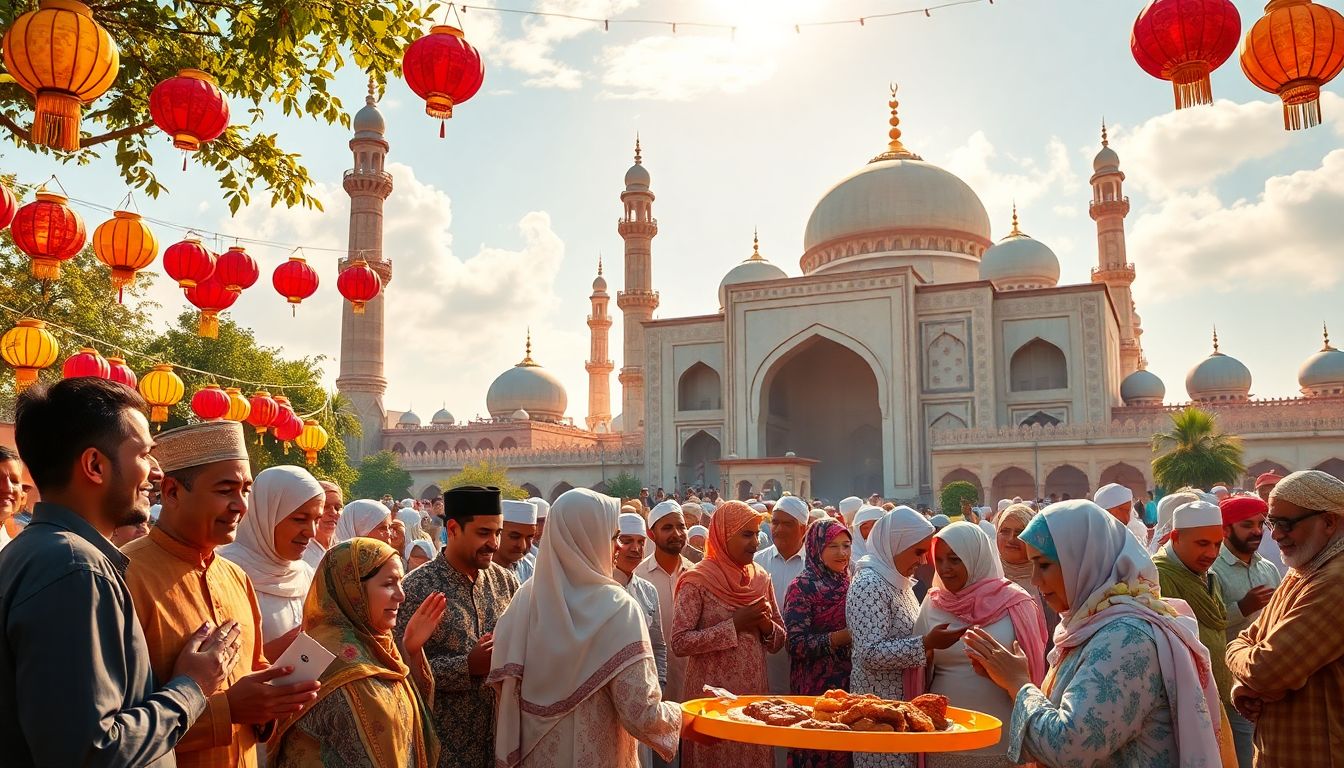
Celebrating Eid al-Adha: A Global Perspective on Islamic Sacrifice and Festivities
Introduction
Eid al-Adha is one of the most important religious festivals for Muslims worldwide. It marks a time of deep reflection, giving, and community. This celebration honors Prophet Ibrahim’s willingness to sacrifice his son to obey Allah. Across different countries and cultures, Muslims find unique ways to observe this special day, blending tradition with local customs. Despite differences, the core values of faith, charity, and unity shine through everywhere.
The Historical and Religious Significance of Eid al-Adha
Origins of Eid al-Adha
The story behind Eid al-Adha starts in religious texts—mainly the Quran and Hadith. It tells of Prophet Ibrahim (or Abraham), who faced a difficult test. Allah asked him to sacrifice his son, Isma'il (or Ishmael). Ibrahim prepared to obey, but at the last moment, Allah provided a ram to sacrifice instead. This story reminds Muslims of the importance of obedience and trust in God. It’s a story that highlights sacrifice as a way to grow closer to Allah.
Key Religious Practices During Eid al-Adha
During Eid, Muslims perform special prayers called Eid Salah. These prayers are held in mosques or open spaces and are often followed by sermons. One of the main rituals is Qurbani—the animal sacrifice. Families buy an animal, usually a sheep, goat, cow, or camel, and offer it as a symbol of Ibrahim’s willingness to give everything for God. The meat from the sacrifice is divided into three parts: for the family, friends, and the poor. Many also visit graves or spend time in reflection.
The Importance of Eid al-Adha in Islamic Faith
Eid al-Adha isn’t just about sacrifice; it connects to the Five Pillars of Islam, which guide Muslim lives. It shows the importance of faith, charity, and community. It’s a day to demonstrate submission to Allah and renew spiritual commitments. By observing Eid, Muslims reaffirm their trust and devotion, making it a deeply personal yet universal act of faith.
How Muslims Celebrate Eid al-Adha Around the World
Cultural Variations in Rituals and Traditions
Around the world, Eid al-Adha looks different. In the Middle East, streets come alive with prayers and celebrations that go late into the night. In South Asia, families dress up in colorful clothes, and special sweets like baklava and ladoo are shared. Southeast Asian Muslims might wear traditional outfits unique to their country, like sarongs or kebayas. African communities often hold open-air feasts and community prayers. Western countries host multicultural events where diverse communities come together to celebrate. These variations make Eid a truly global event with local flavor.
Common Practices Across All Regions
No matter where Muslims live, some traditions stay the same. The main one is the Eid prayer, which marks the start of festivities. Families gather after prayers, sharing meals and exchanging gifts. Animal sacrifice remains central, with the meat distributed fairly, especially to those in need. Charitable giving through Zakat al-Fitr and Zakat al-Adha encourages helping the less fortunate, emphasizing compassion and social justice.
Impact of Modern Circumstances
The COVID-19 pandemic changed how many celebrate Eid. Large gatherings and crowded prayers often moved online or were scaled back. Virtual events became common, connecting Muslims across borders. Some families celebrated at home with virtual greetings, caring for each other’s safety while keeping traditions alive.
The Role of Community, Charity, and Family During Eid al-Adha
Strengthening Community Bonds
Eid is a time to rebuild community spirit. Mosques host special services, and public celebrations bring people together. Many inner-city neighborhoods organize festivals that include music, food stalls, and fun activities. Likewise, interfaith events promote understanding and respect among different faiths and cultures.
Emphasis on Charity and Giving
Charity is a pillar of Eid. Families who perform Qurbani share the meat with neighbors and the needy. Donations to charities help fund projects like schools, hospitals, and food programs. Giving isn’t just an act of generosity; it’s a way to promote social justice and spread kindness.
Family Rituals and Personal Observances
Families often prepare special dishes, cooking traditional foods that reflect their culture. Children enjoy new clothes, gifts, and the thrill of being part of something bigger than themselves. Festive gatherings foster joy, gratitude, and a sense of belonging that lasts long after Eid ends.
Challenges and Controversies in Eid al-Adha Celebrations
Ethical Debates on Animal Sacrifice
Animal rights concerns challenge some traditional practices. Critics argue that animal cruelty should be avoided and promote alternatives like symbolic sacrifices or in-kind donations. Many communities now look for ethical ways to honor the tradition while respecting animals.
Logistic and Economic Challenges
Securing healthy animals and covering costs can be difficult. For low-income families, the expenses of Eid might be a burden. Governments and NGOs often step in to support, providing animals or financial aid. Ensuring fair prices and ethical sourcing remains a key challenge.
Cultural Sensitivities and Intercultural Understanding
With diverse practices, misunderstandings can happen. Some outsiders may view sacrifice practices negatively, requiring respectful dialogue. Muslims worldwide aim to educate others about the festival’s spiritual significance, fostering respect and reducing stereotypes.
Actionable Tips for Celebrating Eid al-Adha Responsibly and Inclusively
- Organize charity drives or volunteer in local community projects.
- Teach children about Eid’s importance to share its values.
- Choose ethical ways of animal sacrifice or donate to supported charities.
- Engage with neighbors and friends of different backgrounds to build mutual understanding.
Conclusion
Eid al-Adha is more than just a religious holiday—it’s a celebration of faith, compassion, and community. It’s a time when Muslims reflect on sacrifice, help those in need, and unite in worship. In our interconnected world, embracing these universal values helps build a more understanding, caring society. Whether you participate actively or simply observe, remember the core message: kindness and sacrifice strengthen us all. Celebrate responsibly, respect cultural differences, and cherish the spirit of Eid wherever you are.
Comments
Post a Comment